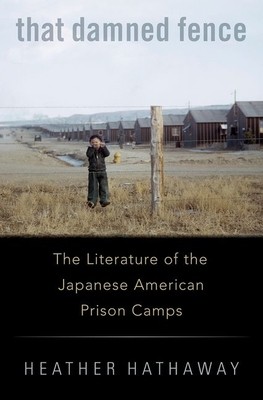
- We will send in 10–14 business days.
- Author: Heather Hathaway
- Publisher: Oxford University Press, USA
- ISBN-10: 0190098317
- ISBN-13: 9780190098315
- Format: 15.5 x 23.1 x 2.5 cm, hardcover
- Language: English
- SAVE -10% with code: EXTRA
Reviews
Description
Until the late twentieth century, relatively few Americans knew that the United States government forcibly detained nearly 120,000 Japanese Americans during World War II. At war's end, the nation, including many of those who were confined to the ten Relocation Centers--which President
Roosevelt initially referred to as concentration camps--wished to wipe this national tragedy from memory.
journalism, and lasting work of arts to make sense of their hardships and to leave a record of their emotional and psychological suffering. Heather Hathaway explores the experiences of inmates in five camps--Topaz in Utah; Granada/Amache in Colorado; Rohwer and Jerome in Arkansas; and Tule Lake in northern California--each with their own literary magazines, such as TREK, All Aboard, Pulse, The Pen, Magnet, and The Tulean Dispatch.
Conditions in the camps varied dramatically, as did their environments, ranging from sweltering swamplands and sun-blasted desert to frigid mountain terrain. So too did the inhabitants of each camp, with some dominated by farmers from California's Central Valley and others filled with professionals
from the San Francisco Bay area. This disparity extended to the attitudes of camp administrators; some deemed the plan a mistake from the outset while others believed their captives to be a significant threat to national security. That Damned Fence reveals the anger and humor, and the deep despair and steadfast resilience with which Japanese Americans faced their wartime incarceration. By emphasizing the inner lives of the unjustly accused and the myriad ways in which they portrayed their captivity, Heather Hathaway gives
voice to Americans imprisoned by their own country for their country of origin or appearance.
EXTRA 10 % discount with code: EXTRA
The promotion ends in 17d.19:08:23
The discount code is valid when purchasing from 10 €. Discounts do not stack.
- Author: Heather Hathaway
- Publisher: Oxford University Press, USA
- ISBN-10: 0190098317
- ISBN-13: 9780190098315
- Format: 15.5 x 23.1 x 2.5 cm, hardcover
- Language: English English
Until the late twentieth century, relatively few Americans knew that the United States government forcibly detained nearly 120,000 Japanese Americans during World War II. At war's end, the nation, including many of those who were confined to the ten Relocation Centers--which President
Roosevelt initially referred to as concentration camps--wished to wipe this national tragedy from memory.
journalism, and lasting work of arts to make sense of their hardships and to leave a record of their emotional and psychological suffering. Heather Hathaway explores the experiences of inmates in five camps--Topaz in Utah; Granada/Amache in Colorado; Rohwer and Jerome in Arkansas; and Tule Lake in northern California--each with their own literary magazines, such as TREK, All Aboard, Pulse, The Pen, Magnet, and The Tulean Dispatch.
Conditions in the camps varied dramatically, as did their environments, ranging from sweltering swamplands and sun-blasted desert to frigid mountain terrain. So too did the inhabitants of each camp, with some dominated by farmers from California's Central Valley and others filled with professionals
from the San Francisco Bay area. This disparity extended to the attitudes of camp administrators; some deemed the plan a mistake from the outset while others believed their captives to be a significant threat to national security. That Damned Fence reveals the anger and humor, and the deep despair and steadfast resilience with which Japanese Americans faced their wartime incarceration. By emphasizing the inner lives of the unjustly accused and the myriad ways in which they portrayed their captivity, Heather Hathaway gives
voice to Americans imprisoned by their own country for their country of origin or appearance.


Reviews